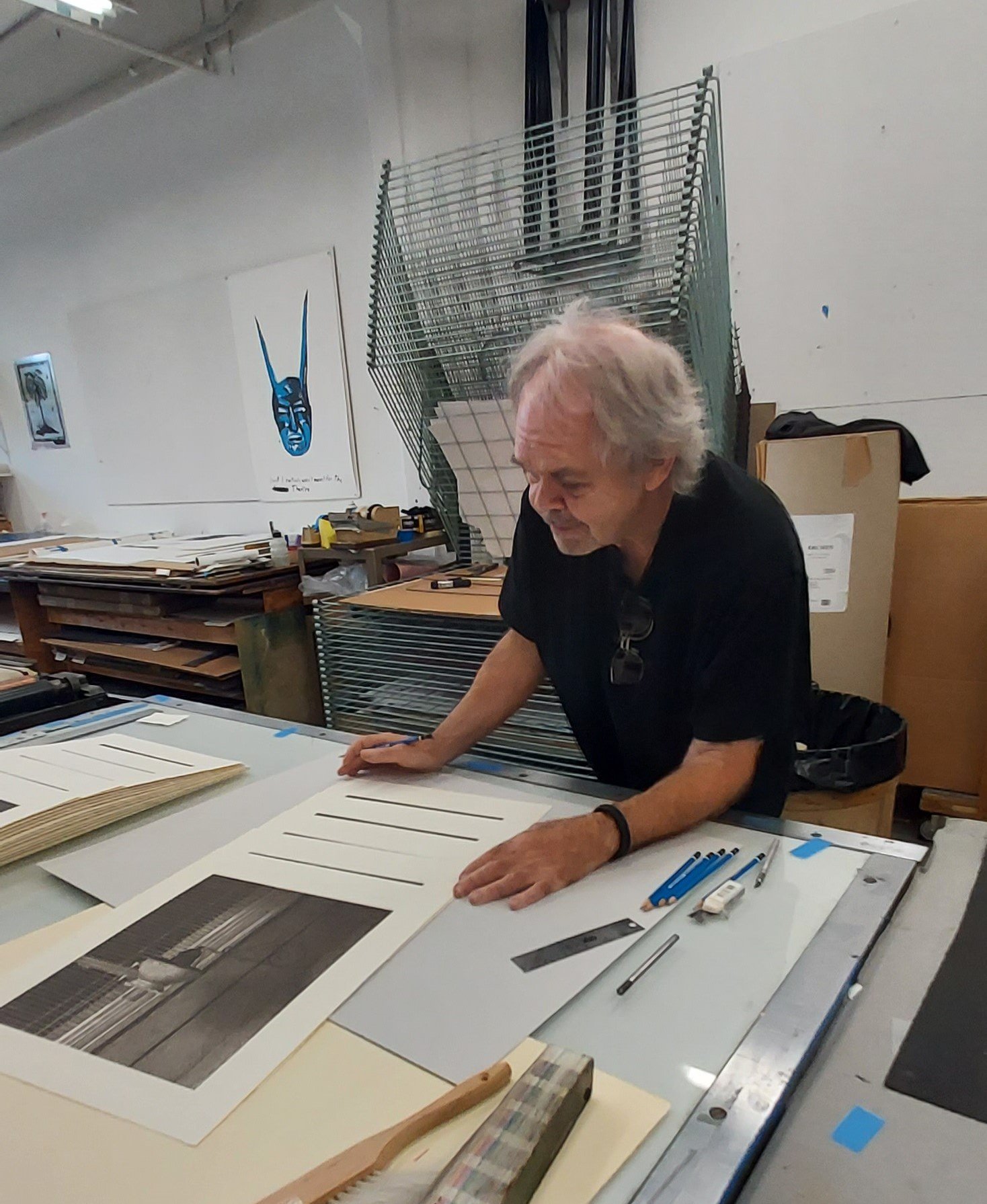Signing an edition
Nick signing the edition of “Hobnail Lamp” at DLE studios in New York City
The Printing of an original Lithograph
email; nick@nickpatten.com
What is an Original Lithograph?
Original lithographs
When a lithograph is made the artist draws directly on the printing element. (stone, aluminum, Mylar, etc.) From this drawing the prints are inked and pulled. One drawing for each different color. Each print records the unique mark of the artist and their hand.
The word "lithograph" means, "stone print". Lithography works on the simple physical principal that oil and water do not mix. This technique was first used around 1798. Limestone is the most common surface to work on. The image is drawn in reverse on the stone with greasy crayons. Afterwards, the stone is dampened with water, which is repelled by the greasy medium wherever the artist has drawn. Then the stone is inked with a massive roller loaded with oily ink which adheres to the greasy areas of the design but is repelled by the wet areas of bare stone. The paper is then pressed to the stone and the ink is transferred to the paper. In a color lithograph, a different stone is used for each color. The stone must be re-inked every time the image is pressed to the paper. Most modern lithographs are signed and numbered to establish an edition.
When prints are made using offset lithography, an original (painting, drawing, watercolor etc.) Are taken to a commercial printer. The printer photographs the original and then converts all the colors into a combination of 4. (Red, Yellow, Blue, and Black) A negative is made for each of these colors and a photographic plate is prepared for printing. They are run, usually all at once on large high speed presses. The mark of the artist is lost in the translation from original to photograph and then
color separation. Depending on the printer, colors can vary drastically from the original.
A common way to tell if a print is a hand lithograph or an offset lithograph is to look at the print under magnification. Marks from a hand drawn lithograph will show a random dot pattern created by the tooth of the surface drawn on. Inks may lay directly on top of others and it will have a very rich look. Prints from an offset press will show a mechanical dot pattern from the color separations. Each color generates a separate dot pattern that when combined produce a very small circle or "rosette". The dot patterns look like the dot from the newspaper comics but smaller. You can easily see these dots under small magnification or sometimes with the naked eye. All the dots line up in neat little rows. If you can see these dots it is a sure sign of camera and commercial involvement. If the dots are random and you purchased the print from a reputable dealer it is most likely a hand drawn lithograph.
